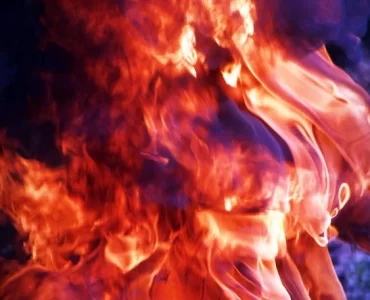Safety Reflexes in the Event of Fire
If you notice a fire, call the emergency services immediately!
It is not always easy to know how to react in an emergency.
Here is what to do in case of fire and toxic cloud.
Fire: an immediate danger for the occupants
Fire spreads rapidly and causes significant destruction.
If a fire is started, it is imperative to limit the fire’s spread.
If the fire spreads despite the actions taken, leaving the premises quickly and evacuating the victims becomes essential.
The occupants could otherwise put their lives in danger.
In the event of a fire: what to do under the circumstances
After noticing the emergencies, you will have to try to extinguish the fire with an extinguisher or a blanket.
Putting out the fire
In the case of a kitchen fire:
If the fire is in the oven, close it, then turn off the heat supply (gas hose or electricity to the meter): the fire will smother itself. (Wait a very long time before reopening.)
If the fire starts in a pan or pot, put a lid on it (or a board, or even a soaked dish towel, but be careful not to splash it around too much), and turn off the heat supply and the hood. Wait a long time.
Never throw water on a kitchen fire or put the burning pan under the tap in the sink: the water disperses the burning oils, increasing the fire.
In the case of a curtain fire:
Rip the curtains off, throw them to the ground and stomp on them.
If there is a fireplace nearby, throw the burning curtains into it.
What to use to put out a fire?
If the fire is not too intense, a blanket may be enough to smother it.
You can use water if the fire has started on a solid material (textile, wood).
If you use a fire extinguisher, aim the flames at their base.
You have not succeeded in putting out the fire: evacuate
If unsuccessful, leave the room and close all doors and openings behind you.
Evacuate the victims:
- Use emergency exits if available,
- and avoid taking the elevator in a building.
- Caution! Never go back into a burning building.
The fire traps you: don’t let the air in!
If you are trapped by fire:
- Close all exits,
- avoid leaving the room where you are trapped,
- if you have no choice, touch the doors before opening them: if you feel the heat, do not open them.
If you must open a door, do so gently and close it immediately if you feel a draft).
You can also:
- pour water on doors, and window edges, to increase their resistance,
- block the air vents with wet towels,
- signal the room where you are located (hang a piece of clothing, for example).
Cover your nose with a cloth, lie down on the floor (the fresh air is located downwards), and wait for help to arrive.
Consequently, a fire can also create a strong toxic cloud. What to do in such a case?
Toxic cloud: react with composure

Some events are frightening and can cause panic among the population.
In the case of a toxic cloud, fear can cause people to flee, and contrary to popular belief, this can put people in danger.
In most cases, the toxic cloud cannot be seen: it is not necessarily a black cloud of high density.
Generally, the toxic cloud does not emit any smell.
In case of a toxic cloud, the authorities warn the population with a warning system (siren).
Getting to safety in case of a toxic cloud
Find a refuge: if possible, take refuge in a shelter.
Close windows and doors
Close the windows, and doors, block the openings (ventilation systems) with clothes or fabrics,
Turn off the air conditioning
Get the radio and turn it on to listen to the messages broadcast by the authorities.
Be careful! Do not go outside until the signal has been given (radio message or siren).
Evacuation due to a toxic cloud: warnings
If you have to be evacuated, remember to bring your important papers and take some money,
Take warm clothes and medication
Also, remember to bring flashlights and a radio,
If you are taking medication, remember to take it with you.



